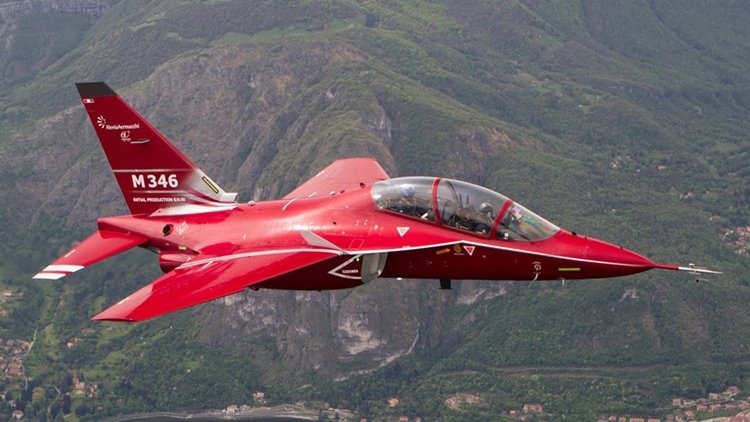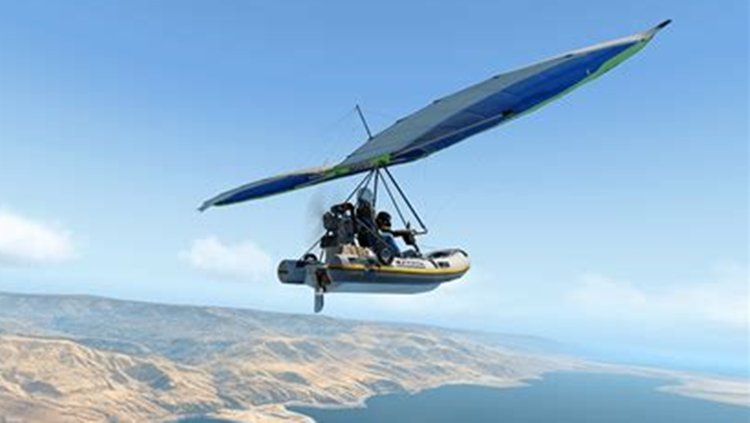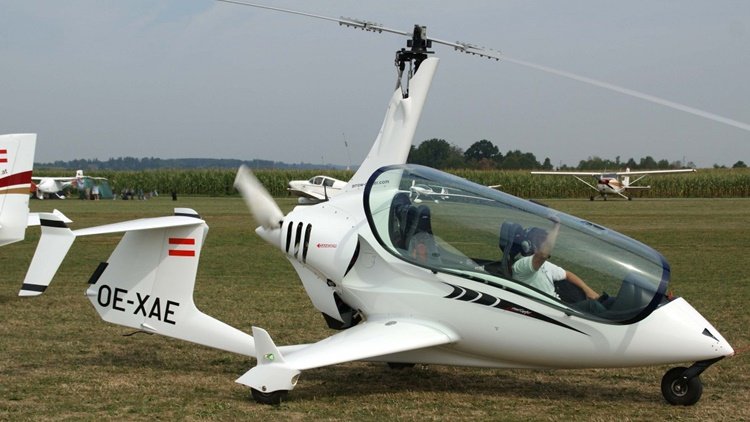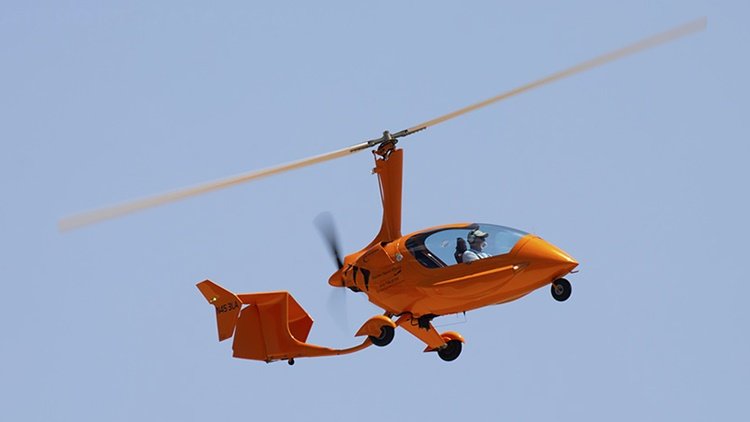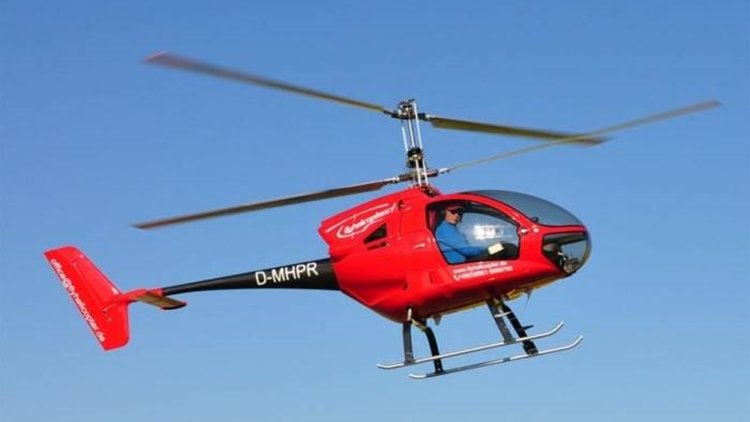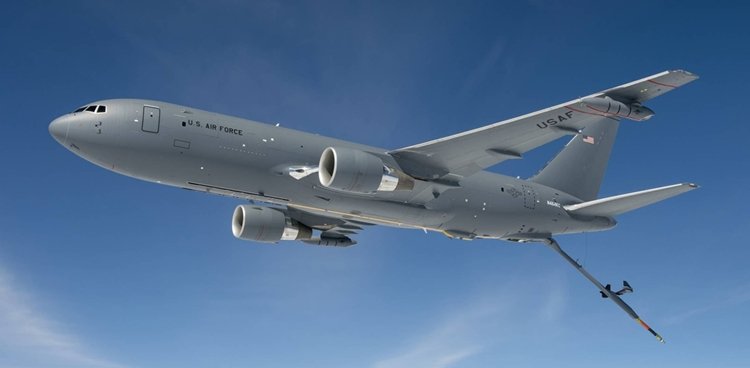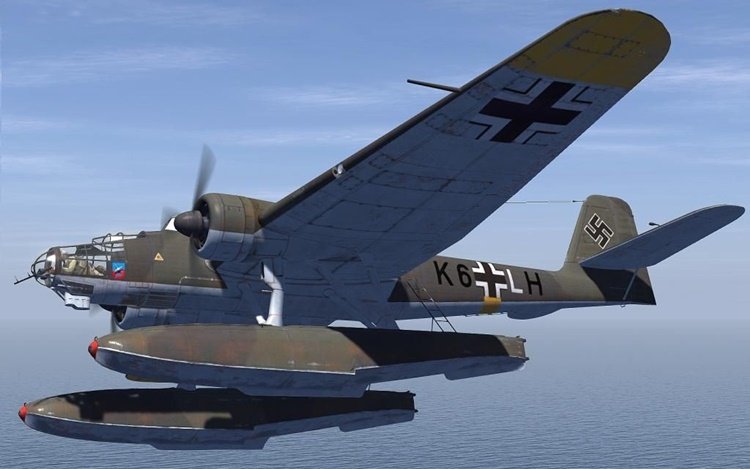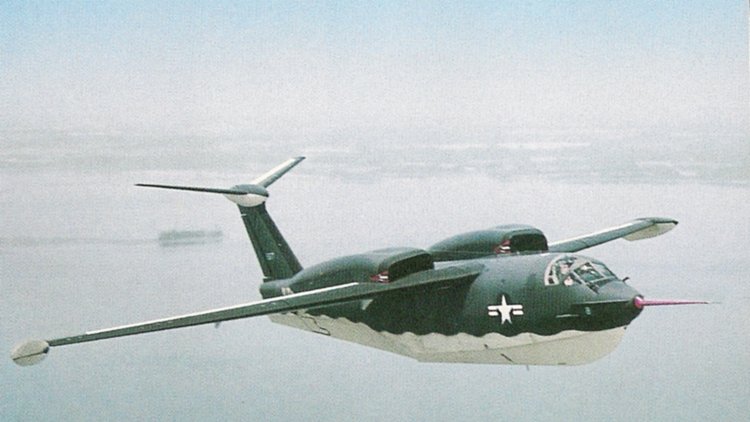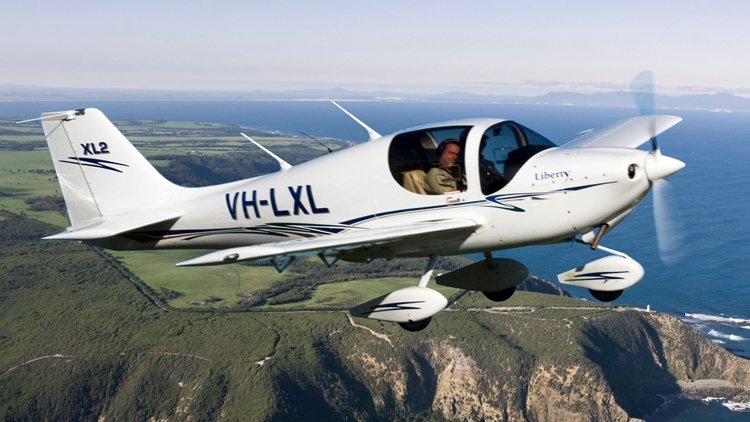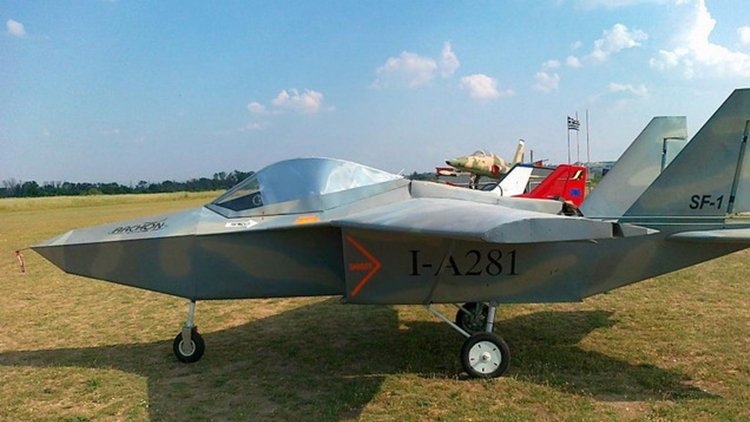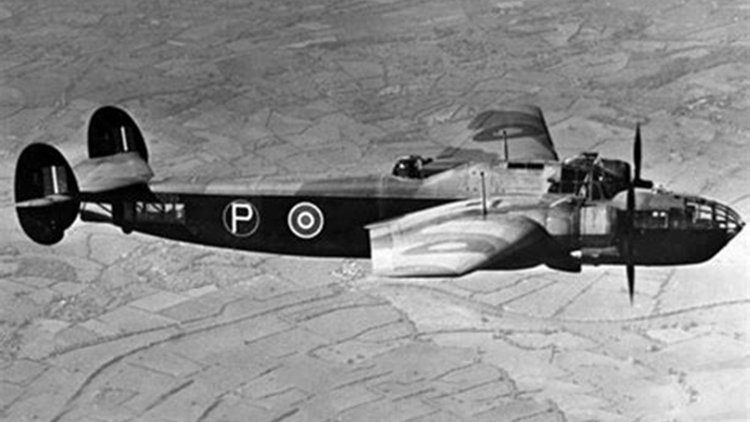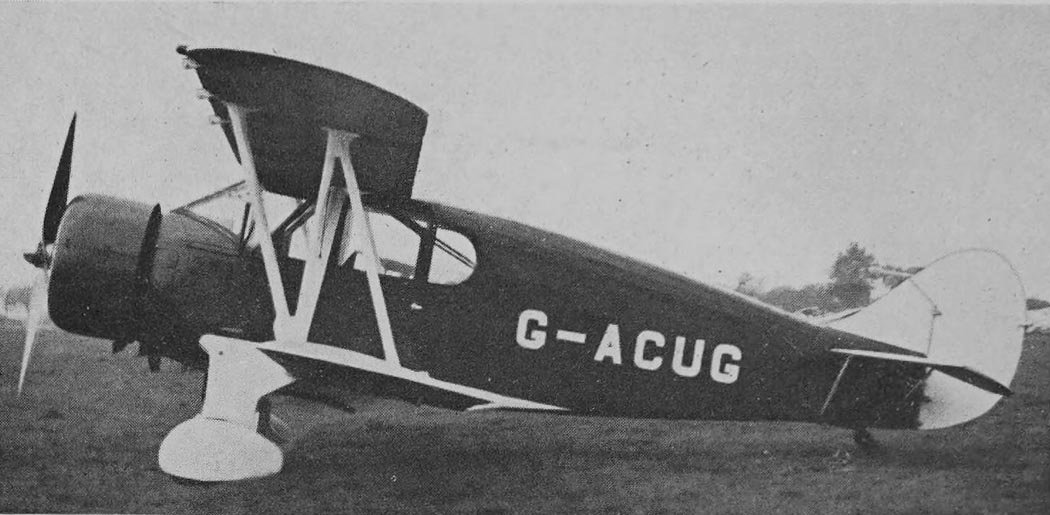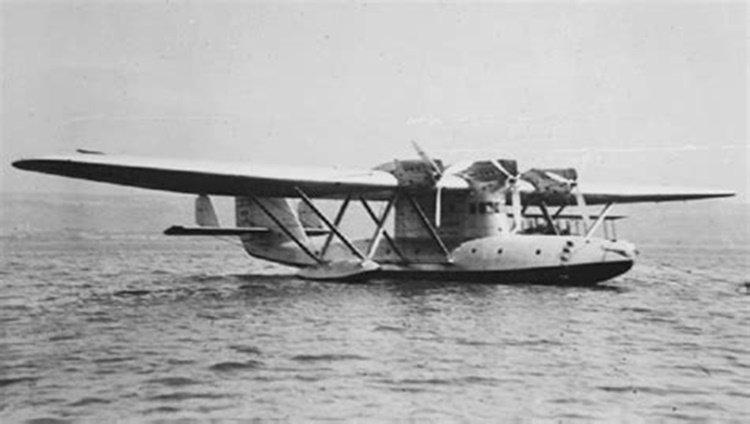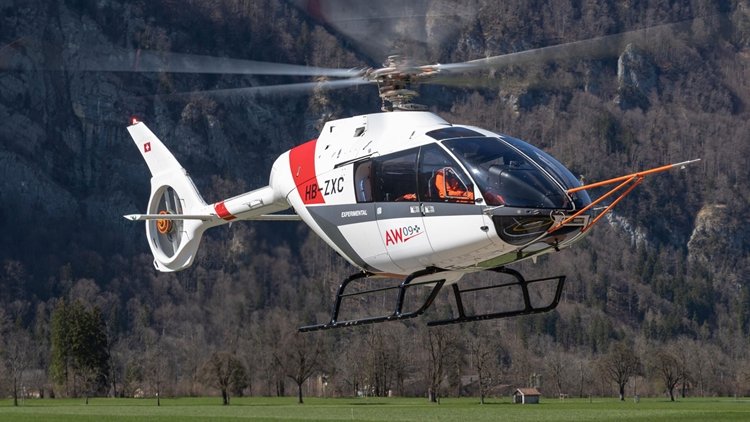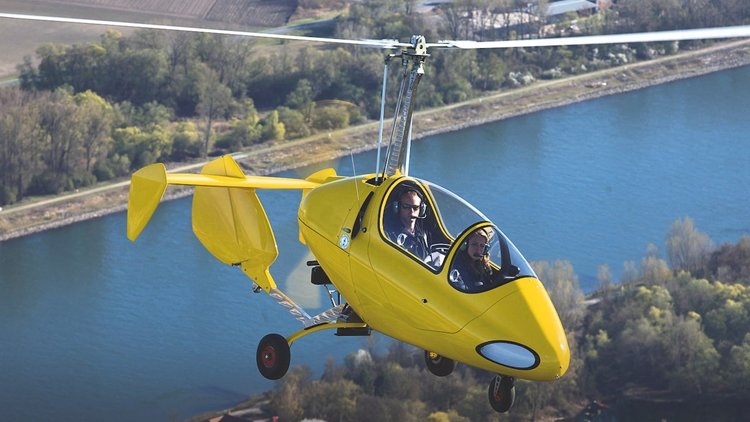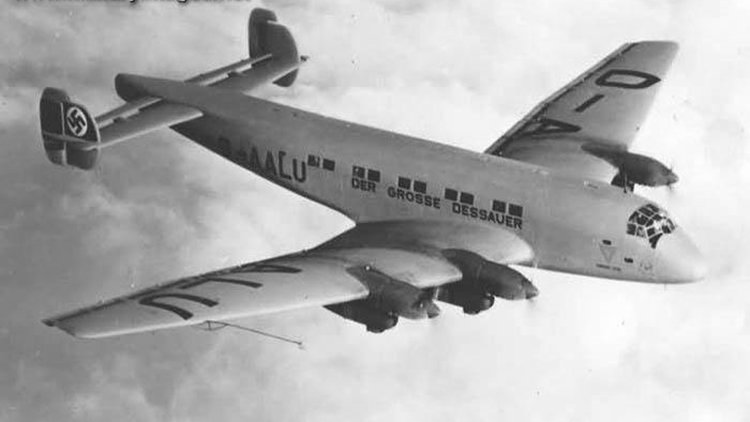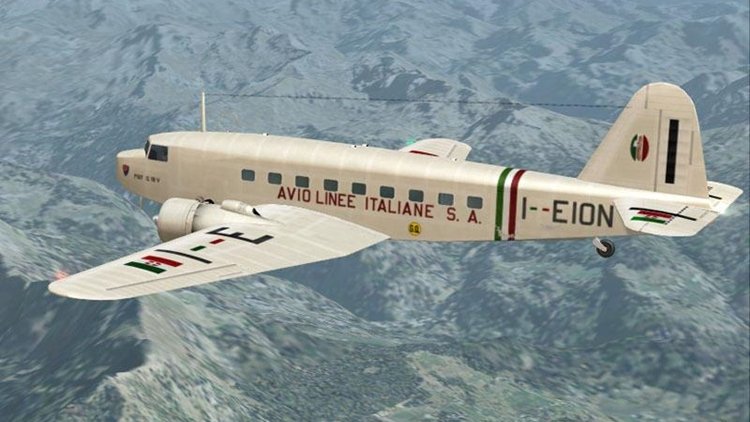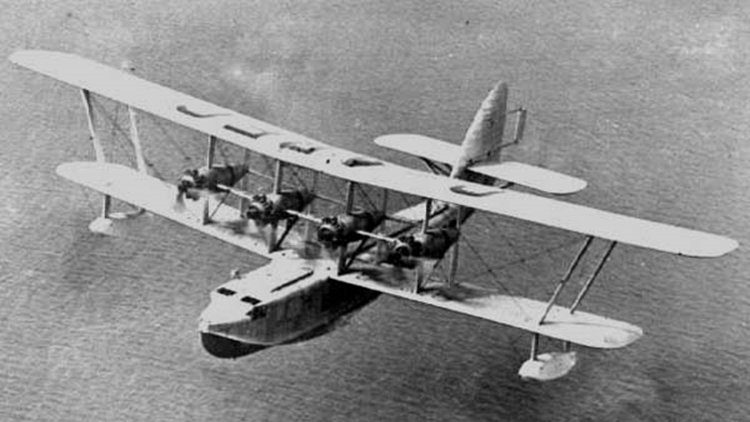-
Posts
7,574 -
Joined
-
Last visited
-
Days Won
67
Content Type
Profiles
Forums
Gallery
Downloads
Blogs
Events
Store
Aircraft
Resources
Tutorials
Articles
Classifieds
Movies
Books
Community Map
Quizzes
Videos Directory
Everything posted by red750
-
The Aermacchi M-346 Master is a family of military twin-engine transonic advanced jet trainers and light combat aircraft. Originally co-developed with Yakovlev as the Yak/AEM-130, the partnership was dissolved in 2000 and then Alenia Aermacchi proceeded to separately develop the M-346 Master, while Yakolev continued work on the Yakovlev Yak-130. The first flight of the M-346 was performed in 2004. The type is currently operated by the air forces of Italy, Israel, Singapore, Greece, Turkmenistan and Poland. Since 2016 the manufacturer became Leonardo-Finmeccanica as Alenia Aermacchi merged into the new Finmeccanica, finally rebranded as Leonardo in 2017. The M-346 is designed for the main role of lead-in fighter trainer, in which aircraft's performance and capabilities are used to deliver pilot training for the latest generation of combat fighter aircraft. Powered by a pair of Honeywell F124 turbofan dry engines, designed to reduce acquisition and operating costs, it is capable of transonic flight without using an afterburner; Alenia Aermacchi has claimed that the M-346's flight performance to be "second only to afterburner-equipped aircraft". During the design process, the twin concepts of "design-to-cost" and "design-to-maintain" were adhered to, reducing acquisition and operational costs; the per flying hour costs of the M346 are reportedly one-tenth of those of the Eurofighter Typhoon. Outside of the training role, the M-346 was designed from the onset to accommodate additional operational capabilities, including combat missions such as close air support and air policing duties. The combat capable M-346FA can perform ground attack, homeland defence and air policing missions and reconnaissance. Various munitions and stores can be carried, including IRIS-T or AIM-9 Sidewinder air-to-air missiles, various air-to-surface missiles, anti-ship missiles, free-fall and laser-guided bombs and rockets, a 12.7 mm gun pod, reconnaissance and targeting pods, and electronic warfare pods; weapon aiming is performed using the Helmet Mounted Display and the multifunction displays. All main systems are duplicated, and the flight system reconfigurable, to increase survivability and functionality in the event of battle damage being sustained.[28] The aircraft has a maximum range of 1,375 nautical miles when outfitted with a maximum of three external fuel tanks, this can be extended via in-flight refuelling via a removable refuelling probe. For more details of the design and operational history of the M-346, click here. Variants M-346 Designation for the basic type. T-346A Italian military designation from 2012 for the M-346. M-346LCA (Light Combat Aircraft) Armed variant offered to Poland as a replacement for aging Su-22. Designation no longer in use. M-346FT (Fighter Trainer) Multirole variant capable of switching between training and combat operations. New features include a new tactical datalink system and different armament capability, but do not include physical changes to the hardware. M-346FA (Fighter Attack) Multirole variant capable of air-to-air and air-to-surface combat with a 3 tonne payload spread over 7 hardpoints, advanced Grifo-M346 radar radar, countermeasures and stealth features including engine intake grids and radar-absorbing coatings on the canopy and wing leading edge. It is being marketed as a light attack aircraft also suitable for aggressor and companion training purposes. The aircraft was revealed on June 18, 2017, in a static display at that year's Paris Air Show. The aircraft is being marketed for export to South American and East Asian countries, and is claimed to be able to carry out operational missions at far lower costs than those of front-line fighters. T-100 Designation used for the United States Air Force's T-X program.
-
The Polaris FIB ("Flying Inflatable Boat") is an Italian flying boat ultralight trike, that was designed and produced by Polaris Motor of Gubbio. The aircraft was introduced in the mid-1980s and remained in production until about 2014. It was supplied as a complete ready-to-fly-aircraft. It is now produced by New Polaris 2020 S.L. of Tenerife, Canary Islands, Spain. The FIB complies with the Fédération Aéronautique Internationale microlight category, including the category's maximum gross weight of 450 kg (992 lb). The FIB has a maximum gross weight of 406 kg (895 lb). The aircraft features a cable-braced hang glider-style high-wing, weight-shift controls, a two-seats-in-tandem open cockpit, an inflatable boat hull and a single engine in pusher configuration. The FIB has no wheeled landing gear, but as a result of customer demand it was later developed into the amphibious Polaris AM-FIB. The FIB's single surface wing is made from bolted-together aluminum tubing and covered in Dacron sailcloth. The 11.15 m (36.6 ft) span wing is supported by a single tube-type kingpost and uses an "A" frame weight-shift control bar. The powerplant is a twin cylinder, liquid-cooled, two-stroke, dual-ignition 64 hp (48 kW) Rotax 582 engine. The aircraft has an empty weight of 216 kg (476 lb) and a gross weight of 406 kg (895 lb), giving a useful load of 190 kg (419 lb). With full fuel of 40 litres (8.8 imp gal; 11 US gal) the payload is 161 kg (355 lb). The company continued to develop the design and in 2010 introduced a new hull shape to increase performance in the water and in the air. Dimitri Delemarie, writing in The World Directory of Leisure Aviation 2011-12, said of the design, "It will never win any speed records, but if there were an award for fun, it would be right up there at the top." The FIB is used by a number of government operators, including police and coastguards. In the early 2000s the company offered a version with the same wing, but without a boat hull, using a conventional minimalist trike frame mounted on wheeled landing gear or optionally skis. Even though it did not have a boat hull it was still marketed under the FIB name.
-
The ArrowCopter is a series of Austrian autogyros, designed and produced by FD-Composites GmbH of Zeillern. When it was in production the ArrowCopter AC20 series was supplied as complete, factory built, ready-to-fly-aircraft. By the summer of 2018 the company website had been removed and the company had filed for insolvency protection. In October 2019 the Sichuan Dahua General Aircraft Manufacturing Company of China purchased the assets of the company. The ArrowCopter was designed to comply with British BCAR Section T rules. It features a single main rotor, a two-seats in tandem configuration enclosed cockpit with a bubble canopy, stub wings, tricycle landing gear and a four-cylinder, liquid and air-cooled, four-stroke, dual-ignition turbocharged 115 hp (86 kW) Rotax 914 engine in pusher configuration. The 100 hp (75 kW) normally aspirated Rotax 912S and a 118 hp (88 kW) BMW boxer engine with a reduction drive were reported as being under consideration in 2011 as alternate powerplants. The aircraft fuselage is made from an autoclave-cured carbon fibre/kevlar sandwich and mounts an 8.50 m (27.9 ft) diameter rotor. The main landing gear wheels are mounted on the tips of the short wings. The AC 10 has an empty weight of 250 kg (550 lb) and a gross weight of 450 kg (990 lb), giving a useful load of 200 kg (440 lb). The AC 10 flew for the first time on 20 November 2008 and the first production examples appeared in 2011. Production of the AC 20 began in 2012. By 2015 at least 40 aircraft had been produced, going to customers in nine countries. In September 2018, FD-Composites GmbH filed for insolvency protection due to management and financial issues. In October 2019 the Sichuan Dahua General Aircraft Manufacturing Company of China completed the purchase of ArrowCopter's assets. Sichuan Dahua indicated that they intended to retain manufacturing in Austria and set up parallel manufacturing in China. Variants FD-Composites ArrowCopter AC10 Initial version with a maximum takeoff mass of 560 kg (1,230 lb) FD-Composites ArrowCopter AC20 (Specifications below) Production version with an empty mass of 342 kg (754 lb) and a MTOM of 560 kg (1,230 lb)
-
The ELA Aviation ELA 10 Eclipse is a Spanish, two-seat, enclosed autogyro, designed and built by ELA Aviación of Córdoba, Andalusia, introduced at the AERO Friedrichshafen airshow in 2014. The aircraft is supplied complete and ready-to-fly. The ELA 10 Eclipse has a single main rotor, a two-seats-in tandem enclosed cockpit with a bubble canopy, tricycle landing gear with wheel pants, plus a tail caster and a four-cylinder, liquid and air-cooled, four stroke 100 hp (75 kW) Rotax 912 ULS or turbocharged 115 hp (86 kW) Rotax 914 engine in pusher configuration. The aircraft fuselage is made from composites. Its two-bladed rotor has a diameter of 8.50 m (27.9 ft) and a chord of 22 cm (8.7 in). The aircraft has a typical empty weight of 275 kg (606 lb) and a gross weight of 530 kg (1,168 lb) with the Rotax 914 engine (530 kg (1,168 lb) with the Rotax 912 ULS engine), giving a useful load of 255 kg (562 lb). With full fuel of 100 litres (22 imp gal; 26 US gal) the payload for the pilot, passengers and baggage is 183 kg (403 lb).
-
The EDM Aerotec CoAX 2D/2R is a series of German coaxial main rotor helicopters designed and produced by EDM Aerotec of Geisleden. The aircraft is supplied complete and ready-to-fly. The CoAX 2D/2R was originally known as the FLIP 2 (Fly In Perfection) and is a derivative of the FLIP 1, a conventional helicopter with a main and tail rotor. The CoAX 2D/2R was designed to comply with the European Class 6 microlight helicopter rules, including the category's maximum takeoff weight of 450 kg (992 lb). Design testing commenced in 2012. The design features dual coaxial main rotors, a two-seats-in side-by-side configuration enclosed cockpit and skid landing gear with ground handling wheels. The two variants use different power plants. The aircraft fuselage is made from composites. Its dual composite two-bladed main rotors have a diameter of 6.50 m (21.3 ft). The aircraft has a typical empty weight of 283 kg (624 lb) and a gross weight of 450 kg (992 lb), giving a useful load of 167 kg (368 lb). With full fuel of 48 litres (11 imp gal; 13 US gal) the payload for the pilot, passengers and baggage is 132 kg (291 lb). Variants CoAX 2D (Specifications below) Current production version in 2017, powered by a six-cylinder, liquid-cooled, four stroke 135 hp (101 kW) D-Motor LF39 engine. CoAX 2R Version powered by a four-cylinder, liquid and air-cooled, four stroke 100 hp (75 kW) Rotax 912ULS engine. No longer advertised as available in 2014.
-
The Boeing KC-46 Pegasus is an American military aerial refueling and strategic military transport aircraft developed by Boeing from its 767 jet airliner. In February 2011, the tanker was selected by the United States Air Force (USAF) as the winner in the KC-X tanker competition to replace older Boeing KC-135 Stratotankers. The first aircraft was delivered to the Air Force in January 2019. The Air Force intends to procure 179 Pegasus aircraft by 2027. In 2006, the USAF released a request for proposal (RFP) for a new tanker program, KC-X, to be selected by 2007. Boeing announced it may enter a higher capability tanker based on the Boeing 777, named the KC-777 Strategic Tanker. Airbus partnered with Northrop Grumman to offer the Airbus A330 MRTT, the tanker version of the A330, which was marketed to the USAF under the designation KC-30. In January 2007, the USAF issued the KC-X Aerial Refueling Aircraft RFP, calling for 179 tankers, four system development and demonstration and 175 production, in a contract worth an estimated US$40 billion (~$54.7 billion in 2022).[12] Northrop and EADS expressed dissatisfaction at how the RFP was structured and threatened to withdraw, leaving only Boeing in the running. In February 2007, Boeing announced it was offering the KC-767 Advanced Tanker for the KC-X, stating that the KC-767 was a better fit than the KC-777 for the requirements. In April 2007, Boeing submitted its KC-767 tanker proposal to USAF. The KC-767 offered for this KC-X round was based on the in-development 767-200LRF (Long Range Freighter), rather than the -200ER on which Italian and Japanese KC-767 aircraft are based, differing by combining the -200ER fuselage, -300F wing, gear, cargo door and floor, -400ER digital flightdeck and flaps, uprated engines, and "sixth-generation" fly-by-wire fuel delivery boom. Boeing submitted its final proposal in January 2008. In February 2008, the DoD chose the KC-30 over the KC-767, the USAF subsequently designated it KC-45A. Boeing submitted a protest to the United States Government Accountability Office in March 2008 and waged a public relations campaign in support of their protest. In June, after USAF admissions on bidding process flaws, the GAO upheld Boeing's protest and recommended the contract be rebid. In July 2008, Defense Secretary Robert Gates announced that the USAF would reopen bidding, and put the contract into an "expedited recompetition" with Defense Undersecretary John Young in charge of the selection process, not the USAF. A draft of the revised RFP was provided to contractors in August 2008 for comments. However, in September 2008, the DoD canceled the KC-X solicitation. In September 2009, the USAF began a new round of bids with a clearer set of criteria, including reducing the number of requirements from 800 to 373 in an attempt to simplify the process and allow a more objective decision to be made. In March 2010, Boeing announced it would bid the KC-767 for the new KC-X round. EADS stated in April 2010 it would submit a bid without Northrop Grumman as a U.S. partner. Boeing submitted its KC-767 "NewGen Tanker" bid, based on the 767-200 with an improved version of the KC-10's refueling boom, and cockpit displays from the 787, in July 2010. Boeing submitted a revised bid in February 2011. In addition to the KC-X, observers speculate that a modified KC-46 will be used as the basis of the KC-Y tanker program, the second step of the USAF's three-step tanker renewal plan, as replacing it with something entirely new is likely too big a risk. In September 2016, Air Mobility Command stated that the follow-on KC-Y acquisition program to replace the remaining KC-135s had been abandoned in favor of further KC-46s with upgrades. The KC-46 Pegasus is a variant of the Boeing 767 and is a widebody, low-wing cantilever monoplane with a conventional empennage featuring a single fin and rudder. It has a retractable tricycle landing gear and a hydraulic flight control system. The Pegasus is powered by two Pratt & Whitney PW4062 engines, one mounted under each wing. It has been described as combining "the 767-200ER's fuselage, with the 767-300F's wing, gear, cargo door and floor, with the 767-400ER digital flightdeck and flaps".[90] The KC-46 uses a similar Maneuvering Characteristics Augmentation System (MCAS) to that implicated in two 737 MAX crashes; in March 2019, the USAF began reviewing KC-46 training due to this feature. Unlike the 737, the KC-46's MCAS takes input from dual redundant angle of attack sensors and disengages with stick input by the pilot. The flightdeck has room for a crew of four with a forward crew compartment with seats for 15 crew members and in the rear fuselage either palletized passenger seating for 58, or 18 pallets in cargo configuration. The rear compartment can also be used in an aero-medical configuration for 54 patients (24 on litters). Quick ingress from the ground is available via a ladder that can be pulled down near the front landing gear. The KC-46A can carry 212,299 lb (96,297 kg) of fuel, 10 percent more than the KC-135, and 65,000 lb (29,000 kg) of cargo. Survivability is improved with infrared countermeasures and the aircraft has limited electronic warfare capabilities. It uses manual flight controls, allowing unrestricted maneuverability to avoid threats anywhere in the flight envelope. At the rear of the KC-46 is a fly-by-wire refueling boom supplemented by wing air refueling pods at each wingtip and a centerline drogue system under the rear fuselage so it can handle both types of refueling in one mission. The boom includes a hydraulic relief valve system, similar to those on the KC-10 and KC-767 tankers, to relieve axial pressure in the event of excessive loads building up on the boom. In order to address the stiff boom issue, which keeps a KC-46 from refueling lightweight, thrust-limited receivers like the A-10, Boeing is replacing the current actuator with one using a pressure-flow PQ valve in the 2023 time frame. Rather than using a single boom operator seated or prone at the tail looking out a window, the Aerial Refueling Operator Station (AROS) seats two operators at the front of the tanker. AROS includes three main displays for each operator to display images from multiple multi-spectral cameras distributed around the aircraft. The central 2D/3D display provides a rear-facing view for boom refueling operations. Boom operators can execute their mission in total darkness with both aircraft blacked out. The hybrid 2D-3D system requires stereoscopic glasses to be fully effective. The Remote Vision System (RVS) that feeds video to the AROS has been problematic, motion viewed in the RVS versus which can create a depth compression and curvature effect. Blackouts and washouts on the displays during refueling, caused by shadows or direct sunlight are a problem that will be fixed by the RVS 2.0 upgrade along with depth perception issues via the use of new cameras and a full-color high-definition screen. Experienced boom operators of older tankers still prefer the KC-46, even with its current drawbacks.
-
The Boeing–Sikorsky RAH-66 Comanche is an American stealth armed reconnaissance and attack helicopter designed for the United States Army. Following decades of development, the RAH-66 program was canceled in 2004 before mass production began, by which point nearly US$7 billion had been spent on the program. During the early 1980s, the U.S. Army started to formulate requirements for the replacement of its helicopters then in service, which resulted in the launch of the Light Helicopter Experimental (LHX) program. Nearly a decade later, following the refinement of requirements, evaluation of submissions, and the rebranding of the program as the Light Helicopter (LH) program, during April 1991, the Army announced the selection of the Boeing–Sikorsky team's design as the contest winner, shortly after which a contract for construction of prototypes was awarded. The Comanche was to incorporate several advanced elements, such as stealth technologies, and a number of previously untried design features. Operationally, it was to employ advanced sensors in its reconnaissance role, in which it was intended to designate targets for the AH-64 Apache. It was also armed with one rotary cannon and could carry missiles and rockets in internal bays and optionally on stub wings for light attack duties. Two RAH-66 prototypes were constructed and underwent flight testing between 1996 and 2004. On 1 June 2000, the program entered its $3.1 billion engineering and manufacturing development (EMD) phase. However, during 2002, the Comanche program underwent heavy restructuring; the number of Comanches that were to be purchased was cut to 650. At the time, the projected total cost for the full production of the Comanche in such numbers stood at $26.9 billion. As early as the late 1990s, the Government Accountability Office (GAO) had reported that it had "serious doubts" about the program, observing that the Comanche would "consume almost two thirds of the whole Aviation budget by Fiscal Year 2008". Multiple government agencies had acted to cut the number of Comanches on order, but, as a consequence of the heavy reductions to the numbers to be procured, the unit costs soared. On 23 February 2004, the U.S. Army announced the termination of the Comanche program.
-
The Heinkel He 115 was a three-seat World War II Luftwaffe seaplane. It was used as a torpedo bomber and performed general seaplane duties, such as reconnaissance and minelaying. The aircraft was powered by two 960 PS (947 hp, 720 kW) BMW 132K nine-cylinder air-cooled radial engines. Some later models could seat four, had different engines or used different weapon arrangements. In 1935, the German Reich Air Ministry (RLM, Reichsluftfahrtministerium) produced a requirement for a twin engined general purpose floatplane, suitable for patrol and for anti-shipping strikes with bombs and torpedoes. Proposals were received from Heinkel Flugzeugwerke and from the Blohm & Voss aircraft subsidiary Hamburger Flugzeugbau. On 1 November 1935, orders were placed with Heinkel and Hamburger Flugzeugbau for three prototypes each of their prospective designs, the He 115 and the Ha 140. The first prototype Heinkel flew in August 1937, testing was successful and the He 115 design was selected over the Ha 140 early in 1938, leading to an order for another prototype and 10 pre-production aircraft. The first prototype was used to set a series of international records for floatplanes over 1,000 km (620 mi) and 2,000 km (1,200 mi) closed circuits at a speed of 328 km/h (204 mph). A total of 138 units were produced. Armament initially consisted of two 7.92 mm (.312 in) MG 15 machine guns, one in the nose and one in the dorsal position. Later He 115s were fitted with a fixed forward-firing 15 mm or 20 mm MG 151 cannon and two rearward-firing 7.92 mm (.312 in) MG 17 machine guns in the engine nacelles. He 115 variants carried LTF 5 or LTF 6b torpedoes and SD 500 500 kg (1,100 lb) or SC 250 250 kg (550 lb) bombs. Some also carried LMB III or LMA mines. For details of operational history in five airforces, and 18 variants, click here.
-
The Martin P6M SeaMaster was an experimental strategic bomber flying boat built by the Glenn L. Martin Company for the United States Navy that almost entered service; production aircraft were built and Navy crews were undergoing operational training, with service entry expected in about six months, when the program was cancelled on 21 August 1959. Envisioned as a strategic nuclear weapon delivery system for the Navy, the SeaMaster was eclipsed by the Polaris submarine-launched ballistic missile (SLBM). Due to the political situation at the Pentagon, the Navy promoted the P6M primarily as a high speed minelayer. In the immediate postwar defense climate, the United States Air Force's Strategic Air Command was the linchpin of the United States' security as the sole means of delivery of the nation's nuclear arsenal. The Navy saw its strategic role being eclipsed by the Air Force and knew both its prestige and budgets were at stake. Its first attempt to address this came in the form of the USS United States, a large supercarrier intended to launch Navy strategic bombers. This was cancelled in 1950 shortly after her keel was laid down, a victim of budget cuts and US Air Force interference. In response, the Navy chose to create a "Seaplane Striking Force", useful for both nuclear and conventional warfare, including reconnaissance and minelaying. Groups of these planes supported by seaplane tenders or special submarines could be located close to the enemy, and being mobile, they would be hard to neutralize. The requirement issued in April 1951 was for a seaplane able to carry a 30,000 lb (14,000 kg) warload over a range of 1,500 mi (1,300 nmi; 2,400 km) from its aquatic base. The aircraft was to be capable of a low altitude dash at Mach 0.9 (1,100 km/h). Both Convair and Martin submitted proposals, and the Martin proposal was chosen as more promising. An order for two prototypes was issued which was projected to lead to six pre-production aircraft and a projected twenty-four production aircraft. Ultimately, 12 aircraft were buiilt. Originally the plane was to have a Curtiss-Wright turbo-ramjet engine but this ran into problems and a more conventional Allison J71-A-4 turbojet was employed, fitted in pairs in overwing pods to keep the spray out of the intakes. Wings swept at 40° were used; they displayed a notable anhedral and were designed with tip tanks that doubled as floats on the water. Many features of Martin's XB-51 bomber prototype were used, including an all-flying "T" tail and a rotating bomb bay—pneumatically sealed against seawater in the P6M. Variants XP6M-1 prototypes, two built (BuNos 138821, 138822). Both crashed. YP6M-1 pre-production model, six built (BuNos 143822-143827). All six examples were scrapped when the program was cancelled. P6M-2 (Specifications below) production model, eight built (BuNos 145876-145899). 145877-145879 were completed and flown, 145876 and 145880-145883 were completed but not flown. Contracts for 145884-145899 were cancelled.
-
The Liberty XL2 is a two-seat, low-wing, general aviation aircraft manufactured from 2004–2011 by Liberty Aerospace of Melbourne, Florida. A derivative of the Europa XS kit plane, it serves both as a touring aircraft for private flyers and as a flight trainer. Subsequently, Discovery Aviation acquired the rights and in 2018 production of the aircraft (now named as the Discovery XL-2) resumed at the same Florida factory. Derived from the Europa XS kitplane and motor-glider, the XL-2 was type certified in 2004 under FAR Part 23 for VFR and IFR flight. Compared to the Europa XS, the fuselage is slightly wider and larger to accommodate bigger American pilots, and also taller with a bigger windscreen. The wing is metal instead of composite and the aircraft is equipped with a Teledyne Continental Motors FADEC-controlled engine mounted on a metal space frame instead of the Europa's Rotax 912 engine mounted on the fiberglass fuselage. The landing gear is also of a different design. The Liberty was designed by Ivan Shaw, who also created the Europa. The aircraft has a composite fuselage and aluminum wings. The engine is a fuel injected FADEC (Full Authority Digital Engine Control) equipped Continental IOF-240–B driving an MT composite propeller. The landing gear is of tricycle configuration and all three sprung gear legs are made from 4130 chrome-molybdenum steel alloy. The nose wheel is free-castering. On early versions the nose wheel steering was by differential braking via two finger-controlled brake handles mounted on the centre console. On later versions more conventional toe brakes were installed. The wing features large fowler flaps pivoting on three scissor hinges per wing, with a maximum 30-degree deflection. The flaps are electrically powered and are controlled by a switch to the right of the radio stack. The flap indicator is a three-light system which shows when the flaps are at zero, twenty and thirty degrees. The flaps can be selected in between those settings but require visual confirmation of flap position. The wing is rectangular with a 7:1 aspect ratio, no taper and no washout. Small stall strips are installed a few feet out from the root to aid stall performance. The airfoil is a unique design, which the XL2 shares with its predecessor the Europa. This is a Don Dykins airfoil, designated as a "Dykins 12%", because the wing's maximum thickness is 12% of the chord. The airfoil is a semi-symmetrical, laminar-flow design. The stall warning system is a voice annunciator that says "stall, stall". The fuel is housed in a single fuselage-mounted tank with filler on the left side. The tank holds 28 US gallons usable and is fed to the engine via a simple on-off fuel selector. For more etails of the devepoment and design, click here.
-
G-Aerosports Archon is one of the light aircraft types designed and built by G-Aerosports, an airplane manufacturer based in the city of Florina in Northern Greece. The plane has the configuration of a fifth-generation jet fighter and its first version, the single-seat SF/1, made its first flight on June 11, 2009. It is offered for sale in a kit form (while two ready-to-fly copies have been produced); in 2020, an agreement was signed with Fisher Flying Products regarding its license production in Canada for the North American market. The two-seat version SF-2T made its first official flight on April 4, 2022, and in 2023 it was included in a license agreement for production by Fisher Flying Products; an agreement for license production in Australia was also signed. Website ARCHON | The Kit-Build Warbird ARCHON.AERO
-
The Armstrong Whitworth A.W.41 Albemarle was a twin-engine transport aircraft developed by the British aircraft manufacturer Armstrong Whitworth and primarily produced by A.W. Hawksley Ltd, a subsidiary of the Gloster Aircraft Company. It was one of many aircraft which entered service with the Royal Air Force (RAF) during the Second World War. The Albemarle had been originally designed as a medium bomber to fulfil Specification B.9/38 for an aircraft that could be built of wood and metal without using any light alloys; however, military planners decided to deemphasise the bomber role in favour of aerial reconnaissance and transport missions, leading to the aircraft being extensively redesigned mid-development. Performing its maiden flight on 20 March 1940, its entry to service was delayed by the redesign effort, thus the first RAF squadron to operate the Albemarle, No. 295 at RAF Harwell, did not receive the type in quantity until January 1943. As superior bombers, such as the Vickers Wellington, were already in use in quantity, all plans for using the Albemarle as a bomber were abandoned. Instead, the Albemarle was used by RAF squadrons primarily for general and special transport duties, paratroop transport and glider towing, in addition to other secondary duties. Albemarle squadrons participated in Normandy landings and the assault on Arnhem during Operation Market Garden. While the Albemarle remained in service throughout the conflict, the final examples in RAF service were withdrawn less than a year after the war's end. During October 1942, the Soviet Air Force also opted to order 200 aircraft; of these, only a handful of Albemarles were delivered to the Soviets prior to the Soviet government deciding to suspend deliveries in May 1943, and later cancelling the order in favour of procuring the American Douglas C-47 Skytrain instead. A total of 602 Albemarles were built. For details of development, design aand operational history, click here. Variants Over the course of its production life, a number of variants of the Albemarle were built: ST Mk I – 99 aircraft (Specifications below) GT Mk I – 69 ST Mk II – 99 Mk III – One prototype only. Mk IV – One prototype only. ST Mk V – 49 ST Mk VI – 133 GT Mk VI – 117
-

Ultralight crash north of Grafton 12/12/23
red750 replied to Cosmick's topic in Aircraft Incidents and Accidents
@KRviator I suggest you re-read these rules , particularly points 3 and 5 or your posts may be removed. red750 Moderator. -
The Pazmany PL-1 Laminar and Pazmany PL-2 are American two-seat trainer and personal light aircraft designed by Ladislao Pazmany to be marketed as a homebuilt aircraft by his company Pazmany Aircraft Corporation. The aircraft was built under license in Taiwan (Republic of China) as the AIDC PL-1B Cheinshou. It was later followed by an improved version the PL-2. The SLAF Aircraft Engineering Wing developed a modified variant of the PL-2 in 1977, which was never used operationally. The PL-1 Laminar was the first design by Ladislao Pazmany, it was intended to be marketed for the homebuilt market. The prototype first flew on the 23 March 1962. The PL-1 is a cantilever low-wing monoplane with a fixed tricycle landing gear. It has side-by-side seating for a crew of two and is powered by a 95 hp (71 kW) Continental C-90 piston engine. The Aerospace Industrial Development Corporation (AIDC) acquired plans and built a PL-1 for evaluation with a first flight on 26 October 1968. AIDC then built 58 aircraft designated the PL-1B for the Republic of China Air Force and fitted with a 150 hp (112 kW) Avco Lycoming O-320 engine. Soon after the first flight Pazmany produced an improved design, the PL-2 which had a slight increase in cockpit width and changes to the structure to make it easier for homebuilders. The PL-2 was evaluated by a number of air forces in South East Asia. It was built under license in Indonesia as the LIPNUR LT-200. Variants PL-1 Original design for home-built light aircraft PL-1B License-built variant by AIDC with a 150hp (112kW) Avco Lycoming O-320 engine, 58 built. Known as the PL-1B Chieh Shou. PL-2 More rounded, wider cockpit, increased wing dihedral. PL-2A Improved model, all metal, two seats LT-200 (Specifications below) License-built variant by LIPNUR in Indonesia, 4 were built.
-
The Avro 641 Commodore was a British single-engine five-seat cabin biplane built by Avro in the mid-1930s for private use. After building the three seat Avro 639 Cabin Cadet, Avro then designed a larger, five seat cabin biplane, the Avro 641 Commodore. The Commodore had a similar steel tube structure to the Tutor, with heavily staggered single bay wings and a spatted undercarriage. The first Commodore was delivered to its owner on 24 May 1934. Only six Commodores were built, with one being sold to the Maharajah of Vizianagram. This was found to be unsuitable for Indian conditions and was returned to Britain and scrapped.[2] Two were sold to private owners in Egypt and were later taken over by the Egyptian Army Air Force. The two Commodores that remained in service in England on the outbreak of World War II were impressed into service with the Royal Air Force and the Air Transport Auxiliary. One crashed fatally in 1941, with the last being struck off charge in 1942.
-
The Blériot 5190 was a French transatlantic mail plane of the 1930s, a large parasol-wing monoplane flying boat. It was of slightly unusual design, with a low-profile hull and the crew compartment housed in the thick pylon that supported the wing. The four engines were arranged with three along the leading edge of the wing, and the fourth on the centreline of the trailing edge. It was constructed for a French government contract to carry airmail to South America. The first example, christened Santos-Dumont flew on 3 August 1933 and by the end of 1934 had completed two proving flights across the South Atlantic, with Lucien Bossoutrot at the commands and the future French Admiralty Chief of Staff Henri Nomy as flight engineer. In February 1935 with Aéropostale's only other transatlantic mailplane, the Latécoère 300 la Croix du Sud, out of commission for maintenance, the Santos-Dumont entered service. From then until April, she carried all of France's transatlantic mail at the rate of one crossing per week until rejoined by la Croix du Sud and a new Farman F.220 named Le Centaure. As part of this small fleet, the Santos-Dumont continued in this role until June 1937. Altogether, by that time, she had made 38 crossings of the Atlantic. In the meantime, the French government had ordered a further three 5190s from Blériot, and the company had borrowed heavily in order to build the aircraft. Suddenly, the contract was cancelled without explanation or compensation, forcing the firm into bankruptcy. Louis Blériot himself died of a heart attack soon afterwards, on 1 August 1936.
-
-
A Facebook video clip:- https://fb.watch/oPemEMqaA2/
-
The Kopter AW09 (formerly the Marenco Swisshelicopter SKYe SH09 and Kopter SH09) is the Leonardo Helicopter Division's five-to-eight seat, single-engine multirole helicopter which is currently under development at Kopter’s facilities. It is a clean-sheet design amongst a market sector dominated by decades-old airframe designs. The first prototype P1 first flew on 2 October 2014. P2 in February 2016, P3 during November 2018. There have been ongoing delays in first flight of prototypes and TC/commercial deliveries deadlines. The first prototype P1 first flew on 2 October 2014. P2 in February 2016, P3 during November 2018. There have been ongoing delays in first flight of prototypes and TC/commercial deliveries deadlines. On 8 April 2020, Italian manufacturer Leonardo announced the closing of the acquisition of Kopter Group AG (Kopter) from Lynwood (Schweiz). The purchase price consists of $185 million, plus earn out. At the time Kopter employed 320 people. On 21 April 2021 Leonardo rebranded the SH09 single-engine helicopter as the AW09. The SH09 is a light-medium helicopter, initially intended to be powered by a single Honeywell HTS900 turboshaft engine. It uses a shrouded fenestron tail rotor and the main rotor features a five-bladed bearingless hub; the shrouded tail rotor has a wider diameter and a thinner chord in order to increase airflow, while design aspects such as a narrow tail boom, swept-back tips on the main rotor blades, and the shrouded tail rotor offer reduced noise. The HTS900 is rated at 1,020-shaft-horsepower, and was intended to provide improved performance in hot and high conditions. The monocoque fuselage is made from composite materials and is equipped with sliding side doors on either side along with a rear clamshell door; it incorporates a series of floor-mounted windows between the pilots' seats for additional vertical visibility. Some of the composite materials used have been produced using out of autoclave composite manufacturing from suppliers such as TenCate and Gurit. According to Marenco, inspiration for the fuselage's design was drawn from the automotive industry. It has been stated that the firm has sought to introduce the cabin volume of medium-sized twin-engine helicopters to the single-engine market. The SH09 is offered with various different layout configurations. The standard option provides two pilot seats forward and four passenger seats aft, all adjustable fore/aft and up/down. In a high density configuration, five seats are installed in the rear position along with two more passenger seats inline with the pilot's own, which loses the option of the floor window. The use of Kevlar-threaded crashworthy fuel tanks, which are built into the wall and floor of the cargo hold, freed up space to allow for fully adjustable passenger seats in the cabin. The cargo hold is sized to accommodate 10 items of baggage, while the fuel tanks are sized to provide for an endurance of nearly five hours. The rear clamshell door and high-mounted tail boom were designed for air ambulance applications. For more details of development, design and operational history, click here.
-
The Trixy G 4-2 R ("Gyro For Two powered by Rotax") is an Austrian autogyro, designed and produced by Trixy Aviation Products of Dornbirn. The aircraft was introduced at the Aero show held in Friedrichshafen in 2011 and when it was available it was supplied as a complete ready-to-fly-aircraft. The G 4-2 R features a single main rotor, a two-seats-in tandem enclosed cockpit, tricycle landing gear and a four-cylinder, air and liquid-cooled, four-stroke, dual-ignition 100 hp (75 kW) Rotax 912S engine in pusher configuration. The 95 hp (71 kW) ULPower UL260i powerplant is optional. The aircraft fuselage is made with a stainless steel tube frame; the cockpit is formed from carbon fibre. Its 8.4 m (27.6 ft) diameter two-bladed aluminium Averso rotor employs a NACA 8H12 airfoil and has a 1500-hour time between overhauls. For safety the 35 litres (7.7 imp gal; 9.2 US gal) fuel tank incorporates ME Rin anti-explosion technology. A second fuel tank of the same capacity can be optionally added. Baggage capacity is two 21 litres (4.6 imp gal; 5.5 US gal) compartments. The aircraft has an empty weight of 262 kg (578 lb) and a gross weight of 450 kg (992 lb), giving a useful load of 188 kg (414 lb). Even though the manufacturer is an Austrian company the aircraft is built in Slovenia. The G 4-2 R was noted by Bayerl et al. in 2011 for its unusual new aircraft two-year warranty.
-
-
The Junkers Ju 90 was a 40-seat, four-engine airliner developed for and used by Deutsche Luft Hansa shortly before World War II. It was based on the rejected Ju 89 bomber. During the war, the Luftwaffe pressed them into service as military transports. The Junkers Ju 90 airliner and transport series descended directly from the Junkers Ju 89, a contender in the Ural bomber programme aimed at producing a long-range strategic bomber. This concept was abandoned by the Reichsluftfahrtministerium (RLM, Reich Aviation Ministry) in April 1937 in favour of smaller, faster bombers. Design was headed by Ernst Zindel.[1] Development was headed by Professor Herbert Wagner. The Junkers Ju 90 was a four-engine all-metal, low-wing aircraft fitted with twin end-plate vertical stabilizers. The wings were built around five tubular girder spars covered with a smooth stressed skin. The leading edge was quite markedly swept, the trailing edge almost straight. The Junkers "double wing", a full-span movable flap/aileron combination, was fitted. The tail units on the prototypes used the traditional Junkers corrugated skin, the only part of the aircraft to do so, abandoning the exposed corrugated skinning on later Ju 90 production models for the Luftwaffe. The fins and rudders, the latter with prominent horn balances assemblies, were placed at the end of the tailplane; this latter carried the elevators separated by a gap, forming another double wing. These components were as used in the Ju 89. The new fuselage was of oval cross-section, covered by stressed smooth duralumin skin. On the first four Ju 90As, five pairs of rectangular windows were on each side, each double pair lighting a divided-off section of the cabin containing eight seats in facing pairs on either side of a central aisle. The Ju 90B, whose prototypes were the Ju 90 V5 through the Ju 90 V10 aircraft, adopted round fuselage portholes. The Ju 90 V11 became the definitive Ju 290 prototype with smaller, rectangular fuselage windows. The Ju 90B series were visually distinctive because of their oval tail fins. The Ju 90 V6 was withdrawn from test flights, and rebuilt as the Ju 390 V1 prototype. The Ju 90 V9 was also withdrawn and rebuilt as the Ju 390V2, later redesignated in October 1944 as the Ju 390A-1. The Ju 90 V10's rebuild into the Ju 390 V3 bomber prototype was commenced, but was scrapped at the factory in June 1944. The Junkers firm was paid compensation for seven Ju 390s under construction, when Ju 390 orders were cancelled. For more details of design and development, military and civil, click here.
-
The Fiat G.18 was an Italian airliner developed in the mid-1930s. It was a conventional low-wing monoplane with twin engines mounted on the wings, similar in appearance to the Douglas DC-2. The main units of the tailwheel undercarriage retracted into the engine nacelles, leaving their wheels partially exposed. The cabin seated 18 passengers. Three G.18s were put into service with Fiat's own airline, ALI, early in 1936; the feedback received was that the type was underpowered. Fiat responded the following year with a revised version, the G.18V which had more powerful engines, and a redesigned fin and long dorsal strake. Six of these were delivered to ALI, which operated them on its European routes until the outbreak of war. In June 1940, ALI was brought under control of the Regia Aeronautica (Royal Italian Air Force), and the G.18s were put to use as transports. Among other operations, they flew troops to Albania in November 1940 as part of the campaign against Greece. By the time of the Italian armistice, only one remained in operation, with another three captured by Germany, and a fifth aircraft in use by the remaining Italian Fascist forces. This latter aircraft was involved in a major accident on 30 April 1944 when, loaded with munitions, it exploded on the runway at Bresso. The blast caused considerable damage to the airfield. Variants G.18 - original version with Fiat A.59 engines (3 built) G.18V - revised version with Fiat A.80 engines (6 built) (Specifications below)
-
Three screenshots from a Facebook reel taken with Snip and Sketch, because these reels usually require a FB account. A Piper Arrow undercarriage which did not lower properly.
-
The Short S.17 Kent was a British four-engined 15-seat biplane luxury flying boat airliner, designed and built by Shorts to meet a requirement from Imperial Airways for an aircraft with greater range than the Short Calcutta. The new aircraft was to have sufficient range to fly the stage from Mirabella, Crete, to Alexandria in Egypt without the need for refuelling stops in Italian colonial territory due to a political row which had led the Italian Government to ban British aircraft from its ports. Three aircraft were built, each receiving its own name: Scipio, Sylvanus and Satyrus; they were referred to collectively within Imperial Airlines as the Scipio Class flying boats. Each had an aircrew of three (two pilots and a radio operator/navigator) and a steward to prepare meals and light refreshments for the passengers. The Short Kent flying boat was essentially an enlarged, four-engined version of the Calcutta, with the same passenger carrying capacity but with an increased payload for mail and fuel. It was powered by four Bristol Jupiter XFBM radial engines mounted on vertical struts between the upper and lower planes. The wings were constructed using corrugated duralumin box spars and tubular rib assemblies, with a fabric covering and Frise ailerons on the upper and lower wings. Duralumin walkways were provided to allow ready access to the engines for maintenance purposes. The tail unit consisted of braced monoplane horizontal and vertical stabilizers; the tailplane was fitted with Flettner-type servo tabs for trimming on the Short Scylla which had the same wings and tail as the Kent. The anodised duralumin fuselage was mounted below the lower wing, with the planing bottom of the hull made of stainless steel (as on the Singapore II) with a transverse main step. The use of stainless steel reduced the frequency of land inspections of the hull. The bimetallic corrosion problems experienced on the Singapore II hull had been solved; Short Brothers became the first company to master the technique of building seaplane floats and flying boat hulls in this combination of metals. A quick-release hook (controlled by the pilots) was provided, which enabled the captain to start, warm up and (when required) run all four engines up to full power for takeoff while the aircraft was still attached to the mooring buoy. For more details, click here.


